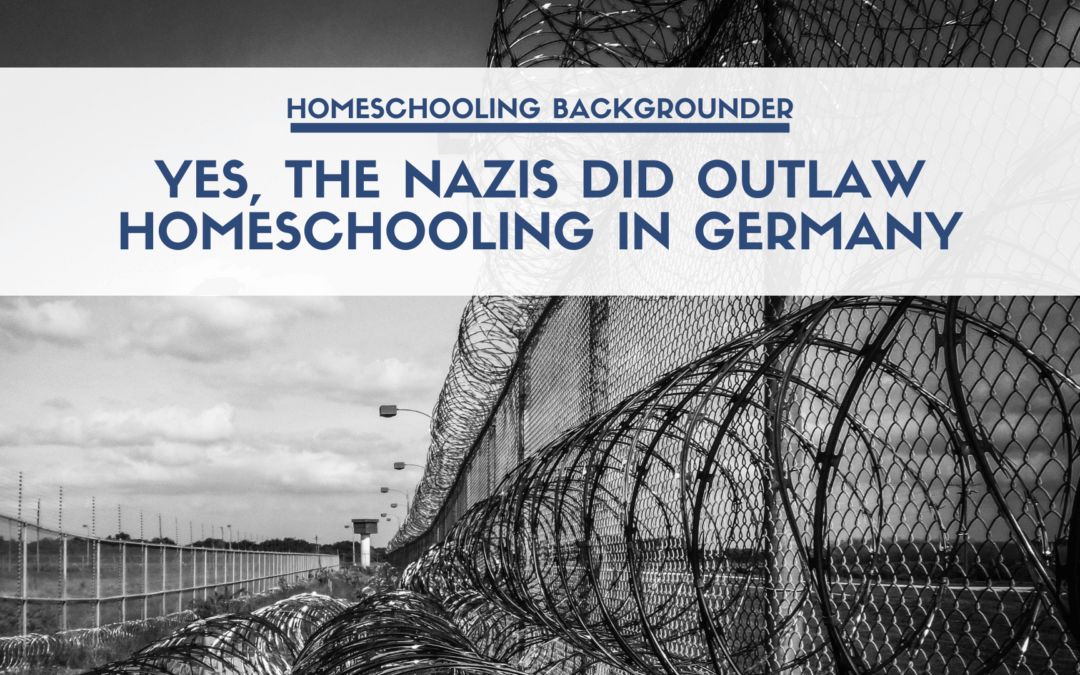Compiled by Rodger Williams
August 17, 2023
General compulsory schooling shall exist in the German Reich. It ensures the education and instruction of German youth in the spirit of National Socialism. All children and youths of German nationality who have their domicile or habitual residence in Germany are subject to compulsory education.
Compulsory schooling shall be fulfilled by attendance at a Reich school. The school supervisory authority shall decide on exceptions….
All children are required to attend elementary school unless they are required to attend secondary school or their education and instruction is adequately provided for in some other way.
During the first four years of elementary school, other instruction in lieu of attendance at elementary school may be permitted only as an exception in special cases….
Children and adolescents who do not fulfill the obligation to attend elementary school, secondary school, or vocational school shall be forcibly brought to school. The assistance of the police may be called upon in this connection….
Whoever is responsible for the person of the schoolchild and whoever is entrusted with the education or care of the schoolchild shall ensure that the schoolchild regularly attends lessons and other school events and complies with the school regulations….
The law concerning elementary schools and the abolition of preschools of April 28, 1920 (RGBl. I. p. 851), as amended by the law of February 26, 1927 (RGBl. I. p. 67), and the law concerning elementary school courses of April 18, 1925 (RGBl. I. p. 49) shall be repealed.
Source: Reich Compulsory Education Act 1938 and 1941 (in German here).
Whereas in the Kaiserreich and the Weimar Republic, children were allowed to be educated at home, this was soon over under the brown terror regime, and state pressure on the family increased more and more.
Sometimes one hears the objection that compulsory education was already introduced in Prussian times. In fact, it existed in Prussia since 1717 (at that time the strictest laws in this regard in all of Europe), but private or home schooling was nevertheless not forbidden. In the so-called “Paulskirche Constitution”, the Imperial Constitution of March 28, 1849, home schooling is listed in § 154 at the catalog of human rights: “Home instruction is not subject to any restriction.” – This applies similarly thereafter to the Weimar Constitution of 1919 and to the final Prussian compulsory education law of 1927.
This centuries-old liberal regulation changed only under the National Socialist dictatorship.
Source: School Coercion in Germany since 1938 – the (Un)Secret Legacy of the Nazis (in German here).
“When an opponent declares, ‘I will not come over to your side,’” [Hitler] said in a speech on November 6, 1933, “I calmly say, ‘Your child belongs to us already… What are you? You will pass on. Your descendants, however, now stand in the new camp. In a short time they will know nothing else but this new community.’” And on May 1, 1937, he declared, “This new Reich will give its youth to no one, but will itself take youth and give to youth its own education and its own upbringing.” It was not an idle boast; that was precisely what was happening….
By the end of 1938 the Hitler Youth numbered 7,728,259. Large as this number was, obviously some four million youth had managed to stay out of the organization, and in March 1939 the government issued a law conscripting all youth into the Hitler Youth on the same basis as they were drafted into the Army. Recalcitrant parents were warned that their children would be taken away from them and put into orphanages or other homes unless they enrolled….
In such a manner were the youth trained for life and work and death in the Third Reich…. [T]heir minds were deliberately poisoned, their regular schooling interrupted, their homes largely replaced so far as their rearing went.
Source: The Rise and Fall of the Third Reich by William L. Shirer (pgs. 249, 254-255, 256).

